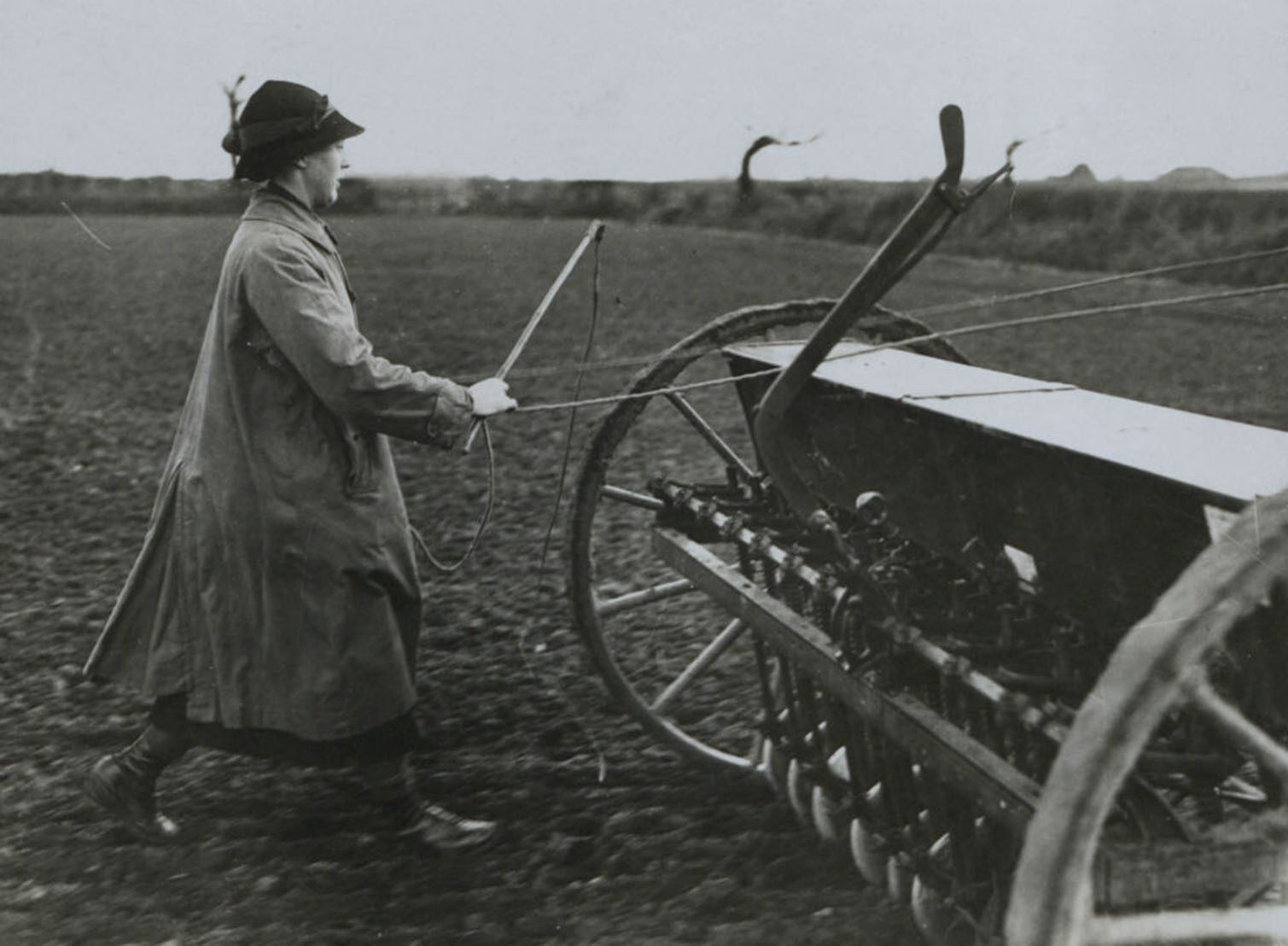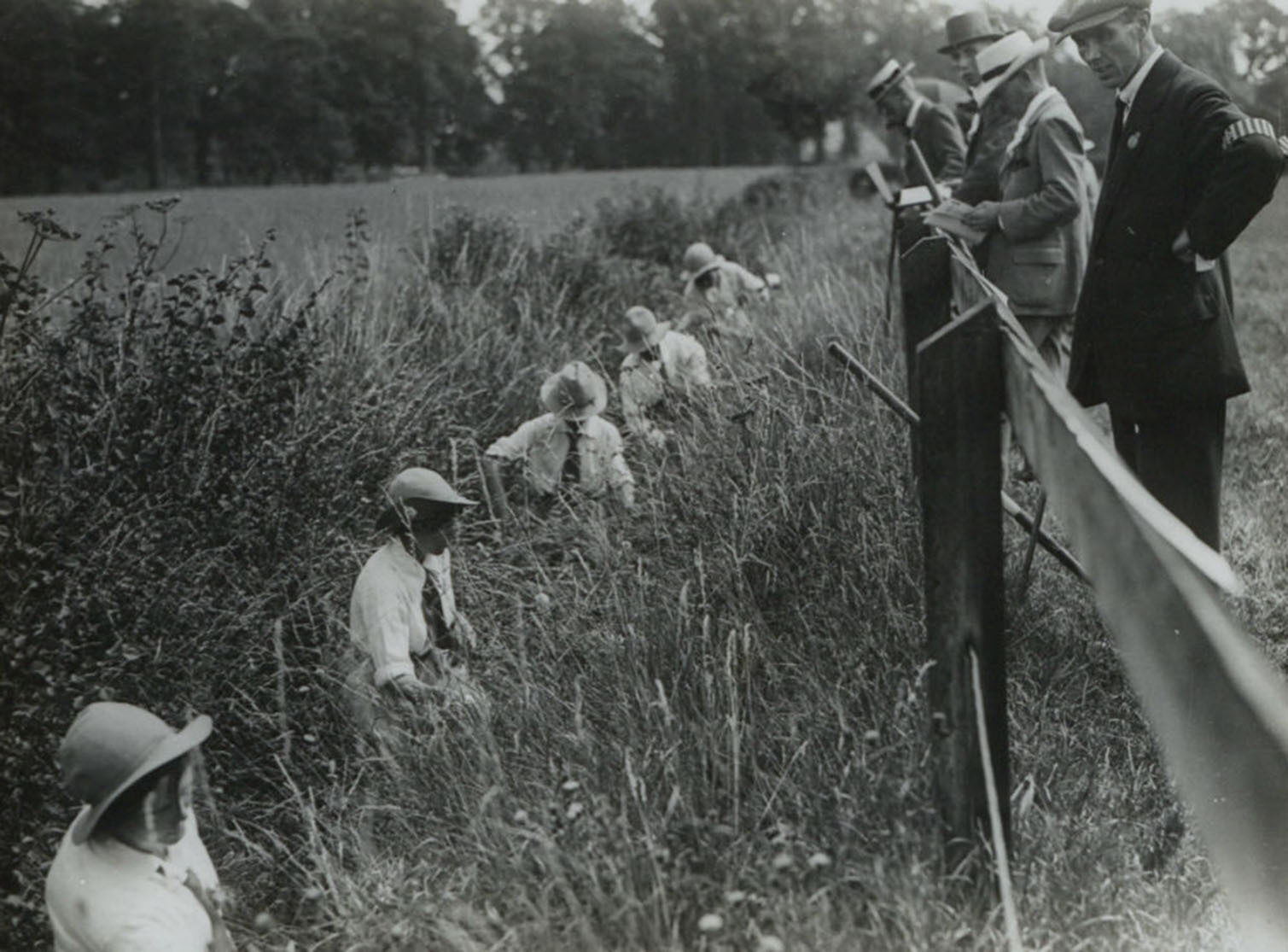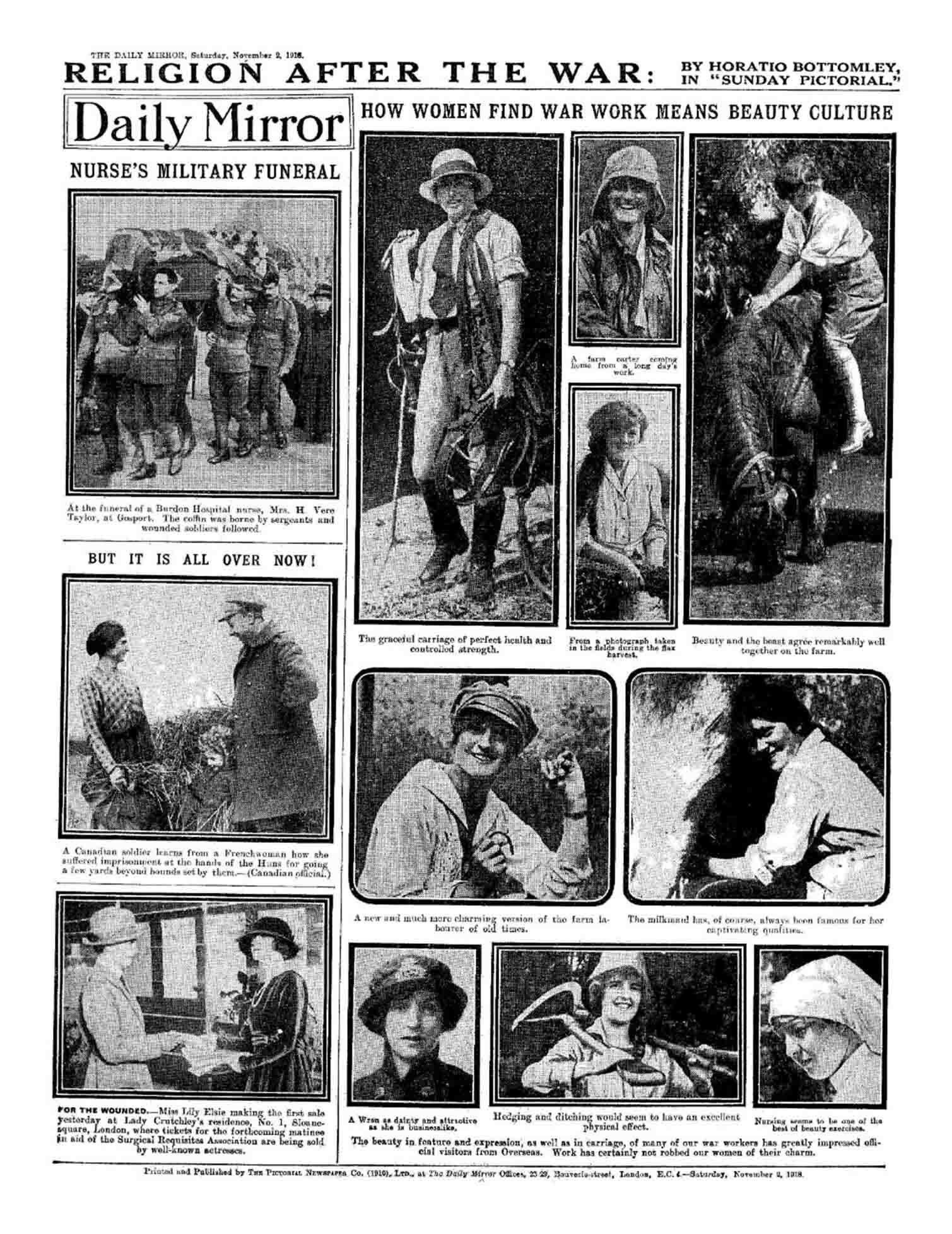Channelling my Inner Wood Nymph: The Women’s Land Army in WW1
After months of rain and grey skies we are finally seeing glimpses of a proper spring. New lambs are in the fields and my garden, which has resembled a muddy swamp for most of the winter, is now beginning to pop with colour. Even the chickens, who have sulked in their coop for months, have begun to lay again. My attempts to grow a variety of vegetables have been less successful, and it appears that we’ll be living off courgettes and potatoes all summer as they are so far the only survivors. Disappointing on a personal level, but with a supermarket just around the corner it is hardly the end of the world.

A woman land worker sowing seeds. Images © The Imperial War Museum. Further reproduction prohibited without permission.
Things were, however, not that simple during the First World War, when Britain had to face the fact that it only produced 35% of the food it consumed. The submarine threat in the Atlantic meant that there was a real risk of severe food shortages. Although Britain did resort to rationing in 1918, it made real efforts to increase food production at home and, with dwindling numbers of able men, had to turn to its new labour force. Over 250,000 women volunteered to work on the land during the war, some of whom became members of the Women’s Land Army and the lesser-known Forestry and Forage Corps. Among the Imperial War Museum photograph collections in our upcoming resource, First World War Portal, are albums dedicated to women’s work in agriculture and forestry. These offer a fascinating insight into the tasks performed by women in food production, but also the attitudes towards them. Farmers were reluctant to employ women as there were doubts about their physical capabilities, and the government attempted to address this by holding competitions in an array of agricultural jobs, from hedging to ploughing.

Competitors in the ditching competition at the Whitehall Estate, Bishops Stratford, July 1917. Image © The Imperial War Museum. Further reproduction prohibited without permission.
This assertion that women were capable labourers is tempered by the other prevailing image of the 'land girls' – press and even official photographs seem keen to assuage any fears of competition for men by emphasising the workers' feminine qualities alongside their physical abilities. Land Army members were depicted in the Daily Mirror as 'wood nymphs of war time' and jolly girls participating in 'farm frolics', more morale-boosting than genuinely useful, and the Daily Mirror ran a competition for 'War Work Belles' in November 1918. In the photograph albums there is a divide between images of women actually performing agricultural tasks and others simply posing in fields looking pretty.

An array of ‘graceful’, ‘captivating’ and ‘charming’ female labourers from the Daily Mirror, 2 November 1918.
Whatever their representation, it is undeniable that the WLA not only helped to feed the country, it provided women with new possibilities and independence. Maybe it isn’t too late to try again with my vegetables; I’ll just have to channel my inner nymph and get back out there.

The woman fruit picker. Image © The Imperial War Museum. Further reproduction prohibited without permission.
For more information about First World War Portal, including free trial access and price enquiries, please email us at info@amdigital.co.uk.
Recent posts

The blog highlights American Committee on Africa, module II's rich documentation of anti-apartheid activism, focusing on the National Peace Accord, global solidarity, and student-led divestment campaigns. It explores the pivotal role of universities, protests, and public education in pressuring institutions to divest from apartheid, shaping global attitudes toward social justice and reform.

This blog examines how primary sources can be used to trace the impact of young voices on society, particularly during pivotal voting reforms in the UK and the US. Explore materials that reveal insights into youth activism, intergenerational gaps, and societal perceptions, highlighting their interdisciplinary value for studying youth culture, activism, and girlhood across history.
